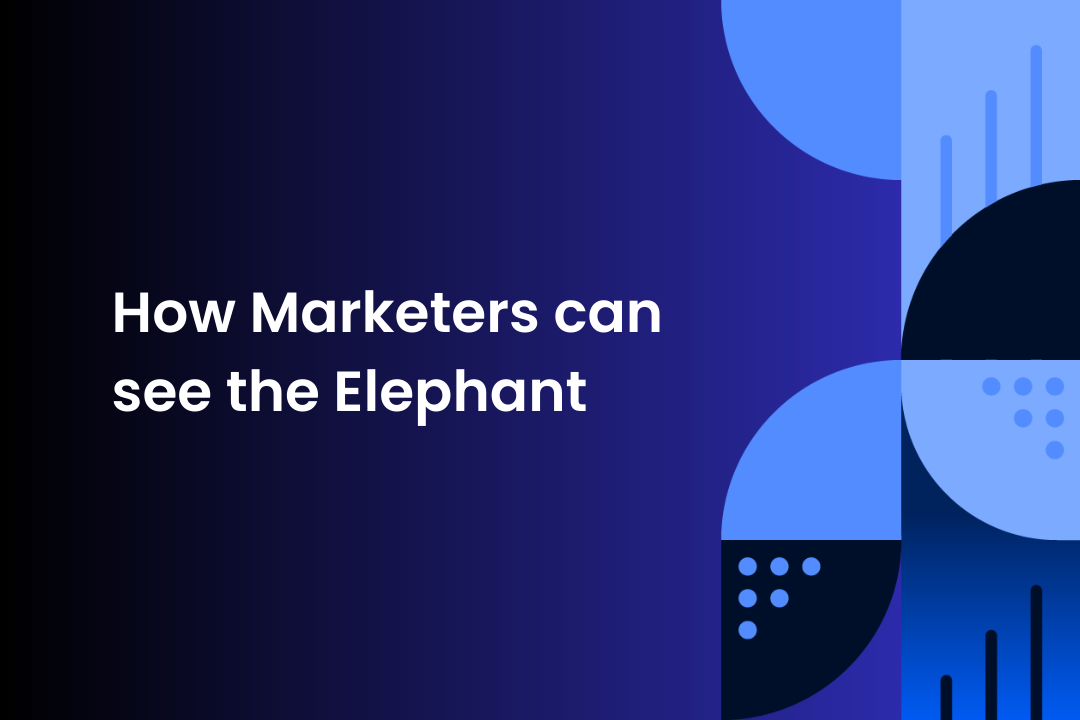In eastern cultures, there is a parable about blind men each feeling their own small part of an elephant. One thinks the elephant is like a snake, feeling the trunk. Another thinks the elephant is a spear, feeling its tusk. Still another thinks the elephant is a wall, feeling its side. Each thinks the other is lying, no one understanding what the elephant is really like in totality.
Digital marketing understanding has become like this. Social only sees social. Search believes it all starts with search. Marketers see activity on their own site but not what happens inside of e-commerce and so no one gets to see the whole elephant based on digital data occurring in the wild.
The way to fix this limited and siloed view of what drives conversion is to have a full line of sight from a fully-permissioned first-party consumer data platform, which is what DISQO offers.
When I first began analyzing their data regarding journeys…those that result in add-to-cart events and those that did not, I started to see the elephant for the first time!
Recently, we analyzed journeys with regard to Pet Food and laptops…two very different categories but with some interesting parallels.
Here are some common insights from the two analyses that have importance for marketers to do an even better job at winning “the journey.”
1. Not all search is equal. We found that the conditional probability of a search leading to an add-to-cart event is much higher if the search occurs inside of an e-commerce environment vs. a search engine.
2. The most predictive upstream event of a sale is if a consumer visits your product page inside of an e-commerce environment. When I saw how much more of a driver this was vs. the brand.com, it changed my thinking about the importance of your brand website at selling stuff. I would now advise clients to strengthen their presence inside of Amazon or Walmart.com, etc. as much as possible and drive traffic from Google not to brand.com but to your e-commerce product page. It turns out, by the way, that reviews are not as important as many think. Getting someone to your product page is really where the battle is won or lost.
3. The role of brand can be decisive but different than you might think. The old AIDA model assumes consumers go from awareness to intention to desire to action/purchase. The battle is won or lost before shopping begins in that model. Not true! When you think in terms of journeys, the role of brand is that the journey starts with branded rather than generic search and that increases the odds of a successful outcome tremendously. However, this does not mean that the consumer doesn’t consider or view other brands! Brand strength is about advantage over the course of the journey, not exclusivity. Yes, you can lose the purchase (or hijack it if they start with a competitor) but the odds of you winning are much higher if they search for your brand to start vs. a competitor or a generic search. This is where brand-building advertising and brand equity really come into play at improving outcomes.
When you can see what ads people are exposed to, and where they are exposed, what actions ad exposure causes…search, where the search occurs, what product pages get viewed inside of e-commerce sites, etc., you get to see the whole elephant… and really understand what marketing actions best drive successful business outcomes.




